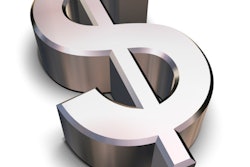
Dental spending remains sluggish five years after the economic recovery, according to a new research brief by the ADA's Health Policy Institute. The amount of empty chair time coupled with a wave of new dental graduates mean dentists' earnings will probably stay stagnant for awhile, the authors concluded.
 Marko Vujicic, PhD, chief economist and vice president of the ADA Health Policy Institute. Image courtesy of the ADA.
Marko Vujicic, PhD, chief economist and vice president of the ADA Health Policy Institute. Image courtesy of the ADA."Dentistry is a profession in transition," stated researchers Bradley Munson and Marko Vujicic, PhD, in the brief's introduction.
The decline in the average dentist's net income, which began in the early 2000s, is attributed to a steady decrease in dental care among adults and shows no sign of changing any time soon, they noted. The researchers predicted a "new normal" in dental spending, demand for dental care, and, consequently, dentist earnings.
Their survey included a representative sample of 4,000 to 17,000 private practice dentists covering a period from 1982 to 2014. Response rates for the 32-year period ranged from 14% to 50%; the response rate for 2014 was 14%. Some 92.2% of active U.S. dentists are private practitioners, according to the ADA.
Lower dentist income reflects stagnant wages
Although U.S. gross domestic product (GDP) rose 6.5% from 2009 to 2014 and the economy is clearly recovering, average household incomes have increased by only 1%, the authors noted.
"While the U.S. economy is in recovery, household incomes are not," they wrote.
The average net income for general practitioners (GPs) in 2014 was $174,780, and it was $322,200 for specialists. The average net income for owner general practitioners was $183,340, while it was $134,020 for nonowners.
Average incomes dropped significantly for all general practitioners since a peak of $219,378 in 2005, according to the report. Dentist incomes have decreased steadily since 2009. Net incomes for specialists increased from 2013 to 2014, but they are still significantly down from 2007.
"It is clear from our analysis that dentists' average net incomes are not recovering with the rebound in the U.S. economy," the researchers wrote.
Dentist earnings, GDP per capita, mean U.S. household income, 1981 to 2014


Chart courtesy of the American Dental Association. Reprinted with permission. All rights reserved. Any form of reproduction is strictly prohibited without prior written permission of the American Dental Association. Originally published by the Health Policy Institute.
Many dentists "not busy enough"
The number of general practitioners who said they were "not busy enough" changed slightly, declining from 36% in 2013 to 34% in 2014. Specialists fared a bit better, with 31% saying they weren't busy enough in 2014, a drop from 37% in 2013. Solo general practitioners reported the most empty chair time, with 40% indicating they weren't busy. Meanwhile, nonowner general practitioners were the busiest, with only 18% indicating they didn't have enough patients.
The survey results had good news for established patients: Average wait times for a general practitioner appointment dropped from 9.6 days in 2001 to 4.5 days in 2012 before increasing slightly to 5 days in 2014. For new patients, the average wait time decreased from 10.8 days in 2001 to 5.3 days in 2012, before rising to 6.2 days in 2014.
"These data suggest strongly that significant unused capacity remains in the dental care system," the researchers noted.
Percentage of dentists "not busy enough"

Percentage of general practitioner dentists "not busy enough," 2014

More new dentists graduating
Adding to the impact of decreased dental spending on incomes is the wave of newly minted dentists looking for jobs. "In fact, recent years have seen a stagnation of dental spending, an increase in the number of dentists, and, as a result, stagnant dentist earnings," the researchers pointed out.
Impact of ACA
The researchers predicted "significant uncertainty" in healthcare in general and also the dental economy. If demand for dental care continues to be low, as expected, dental spending will not return to historically high, prerecession growth levels, according to the authors. The impact of the Patient Protection and Affordable Care Act (ACA) is likely to be mostly among adults on Medicaid who are newly eligible for dental care.
"If the dental sector is indeed entering an era of flattening total dental spending and an increasing supply of dentists, this will have important implications for the bottom line of dental practices," they concluded.



















